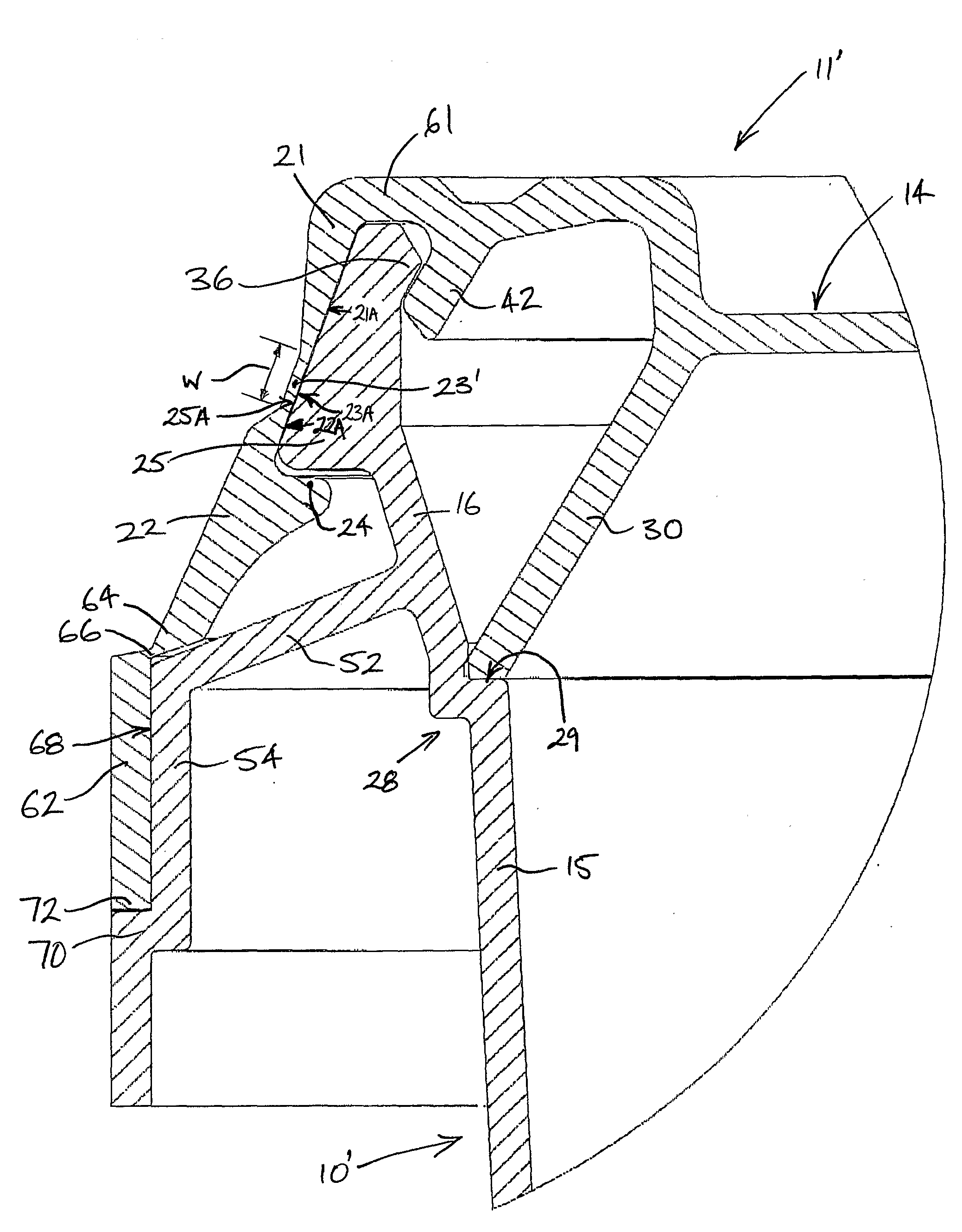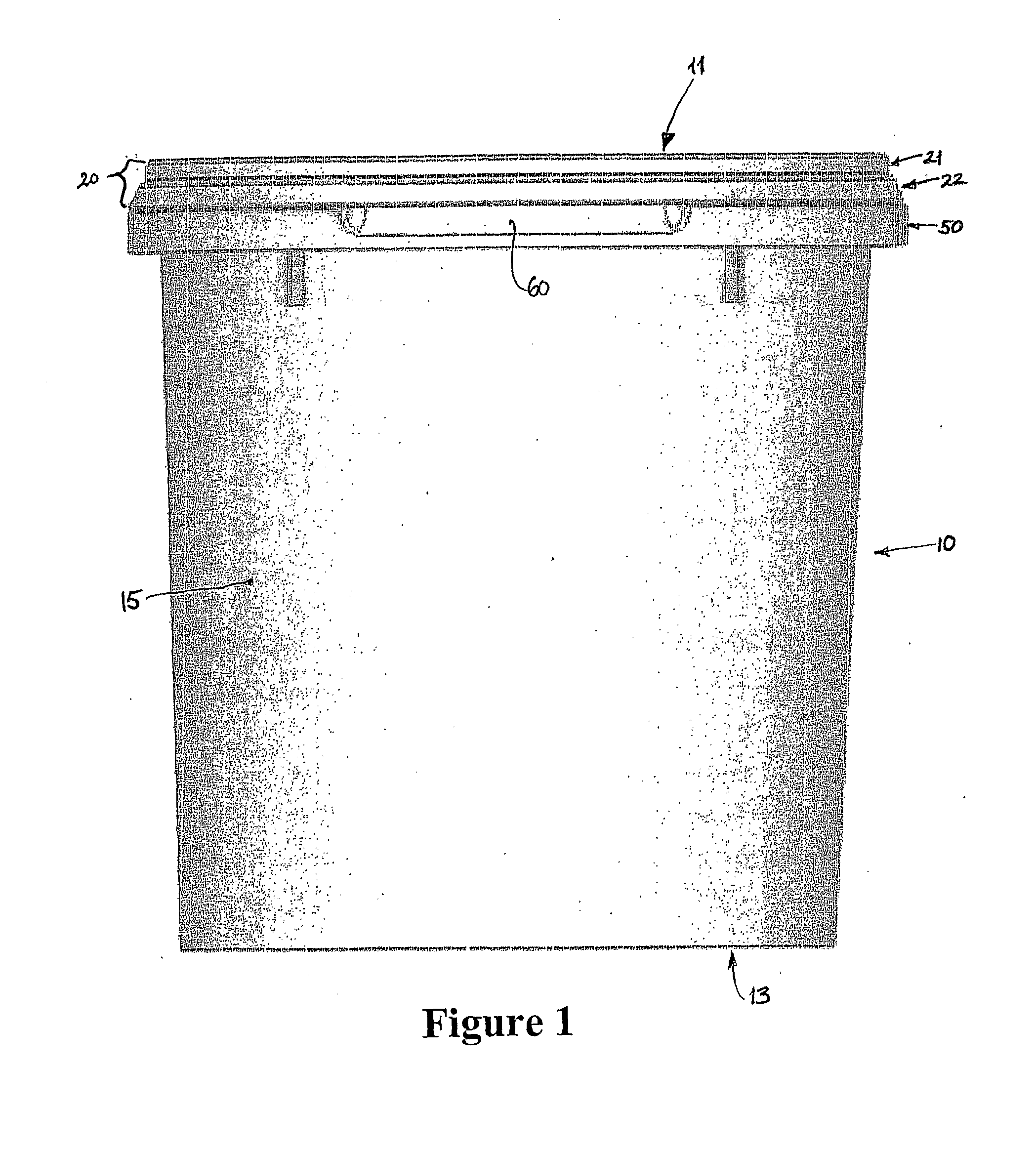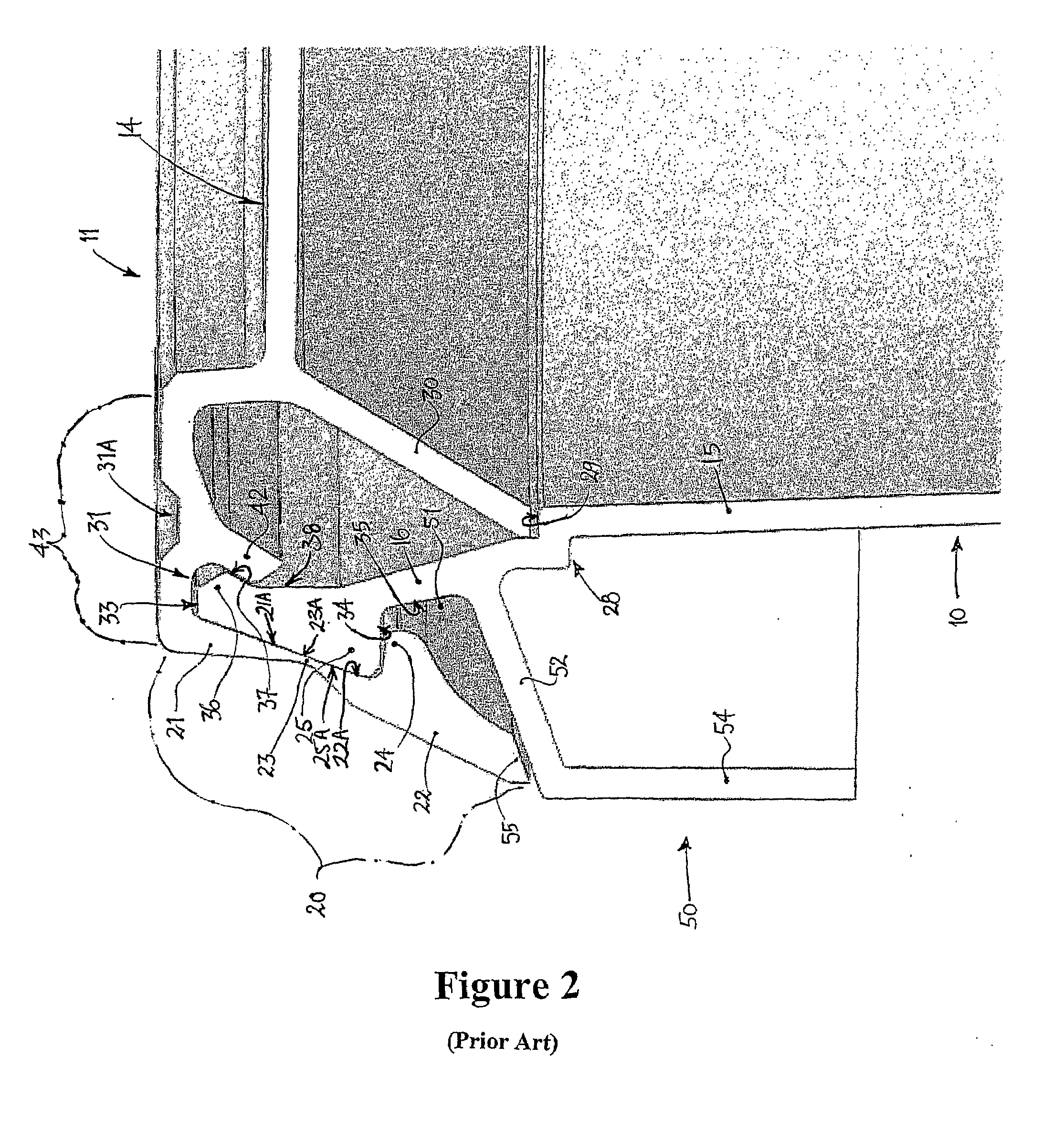Resealable Flexible Container Lid with Pivoting Portions
a flexible container and pivoting technology, applied in the direction of closure lids, caps, decorative arts, etc., can solve the problems of poor drop and stack test performance of closures, achieve the effect of facilitating the initiation of pivoting of the second portion, increasing tamper resistance, and facilitating finger insertion
- Summary
- Abstract
- Description
- Claims
- Application Information
AI Technical Summary
Benefits of technology
Problems solved by technology
Method used
Image
Examples
Embodiment Construction
[0039]Referring to FIG. 1, a closure for mounting to a container is depicted as comprising a container in the form of a pail 10, and a closure in the form of a lid 11. The arrangements now described are typically for a circular pail and lid.
[0040]The pail and lid may each be moulded from polypropylene or high density polyethylene. The pail may be moulded in any desired size and may have a volumetric capacity in the order of e.g. 0.5 to 20 litres. The pail may also be formed from a metal material. In addition, the lid-pail arrangements are suited to both tapered (eg. as in FIG. 1) and straight-sided containers.
[0041]In FIG. 1 it will be seen that the pail has a base 13 and a peripheral wall 15, with a rim 16 forming an upper margin of the wall 15 and surrounding an opening of the pail.
[0042]In FIGS. 2 to 7, it will be more clearly seen that the lid 11 comprises a central portion 14 defining a well, and a skirt 20 located peripherally around the central portion. The skirt surrounds th...
PUM
| Property | Measurement | Unit |
|---|---|---|
| thickness | aaaaa | aaaaa |
| width | aaaaa | aaaaa |
| friction | aaaaa | aaaaa |
Abstract
Description
Claims
Application Information
 Login to view more
Login to view more - R&D Engineer
- R&D Manager
- IP Professional
- Industry Leading Data Capabilities
- Powerful AI technology
- Patent DNA Extraction
Browse by: Latest US Patents, China's latest patents, Technical Efficacy Thesaurus, Application Domain, Technology Topic.
© 2024 PatSnap. All rights reserved.Legal|Privacy policy|Modern Slavery Act Transparency Statement|Sitemap



